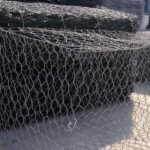According to the World Health Organization, while radon is a gas that’s naturally occurring in the environment, it’s still radioactive. Unfortunately, as it’s natural, traces of radon gas are found everywhere, including indoor places such as workplaces, schools, and homes. Part of what makes radon risky is that it’s said to cause around 3 to 14-percent of all lung cancer cases in a single country. As such it’s a common belief that the lower level of radon in a place, the lower the risk of cancers. However, why is radon testing a good idea when buying a house?
The Dangers of Radon
Radon is a gas that’s naturally-occurring which is formed when uranium decays in rock and soil. This means radon is virtually anywhere at different levels. While radon is generally harmless, high concentrations of radon in one place is extremely dangerous without proper ventilation. This is especially since radon can’t be tasted and smelled.
However, it’s been discovered that radon exposure is actually the cause of 16-percent of lung cancer deaths for smokers and the leading cause of lung cancer deaths for non-smokers in Canada.
- In fact, high radon concentration exposure to a person makes them have a one-in-20 lifetime chance to develop lung cancer sometime in the future. Unfortunately, smokers have a one-in-three lifetime chance for lung cancer to develop due to radon.
- High levels of radon concentration are risky especially since not only are they naturally-occurring, but they move from the ground to the air as well. This means radon can potentially enter structures through cracks, and often build up concentration when they can’t circulate.
How To Mitigate Radon Levels?
As mentioned, high levels of radon can be potentially dangerous not just to you but to your family as well. According to the Environmental Protection Agency, it’s essential to get your home fixed immediately if radon levels reach 4 pCi/L. You may ask service providers such as Radonova for tips and services as to just how you can properly mitigate levels at your home should these situations arise. However, in a general sense:
It’s not a good idea to reseal fissures, cracks, and gaps at home, as they just make the radon gas build up underground and result in larger concentrations. As such, this will inevitably just increase your home’s radon levels exponentially.
- Sub-slab depressurization is perhaps one of the most common methods used to mitigate radon concentration, where fans and pipes are installed below the home to allow radon gas to disseminate before it even enters the house.
- Soil depressurization is another method that aerates the soil that surrounds the house, which then reduces overall radon levels.
- Heat recovery ventilators are also another method used to mitigate radon levels by using fresh outdoor air to enter the home and decrease indoor radon levels.
Conclusion
As a homeowner, and especially a future homeowner, it’s important to make sure that the home we’re living in isn’t just clean and well-constructed, but that it’s also well-maintained and safe for the family. Part of this is ensuring that the house is well-tested for health risks, including radon. If you live in the New York area and need a radom test, try Brightside Home Inspections. Knowing just exactly what the status of radon is at your home allows you to have a general idea as to the kind of safeguards you have to implement in order to ensure the safety of the household. This affords you the opportunity to mitigate and manage disasters before they even arrive on your doorstep.
Jacob Douglas
Jacob used to be a gas fitter before he started to become fascinated about Radon gas. Today he works with Radonova writing about the effects that Radon gas has on families and homes. When he’s not bringing awareness to Radon he’s spending quality time with family.





